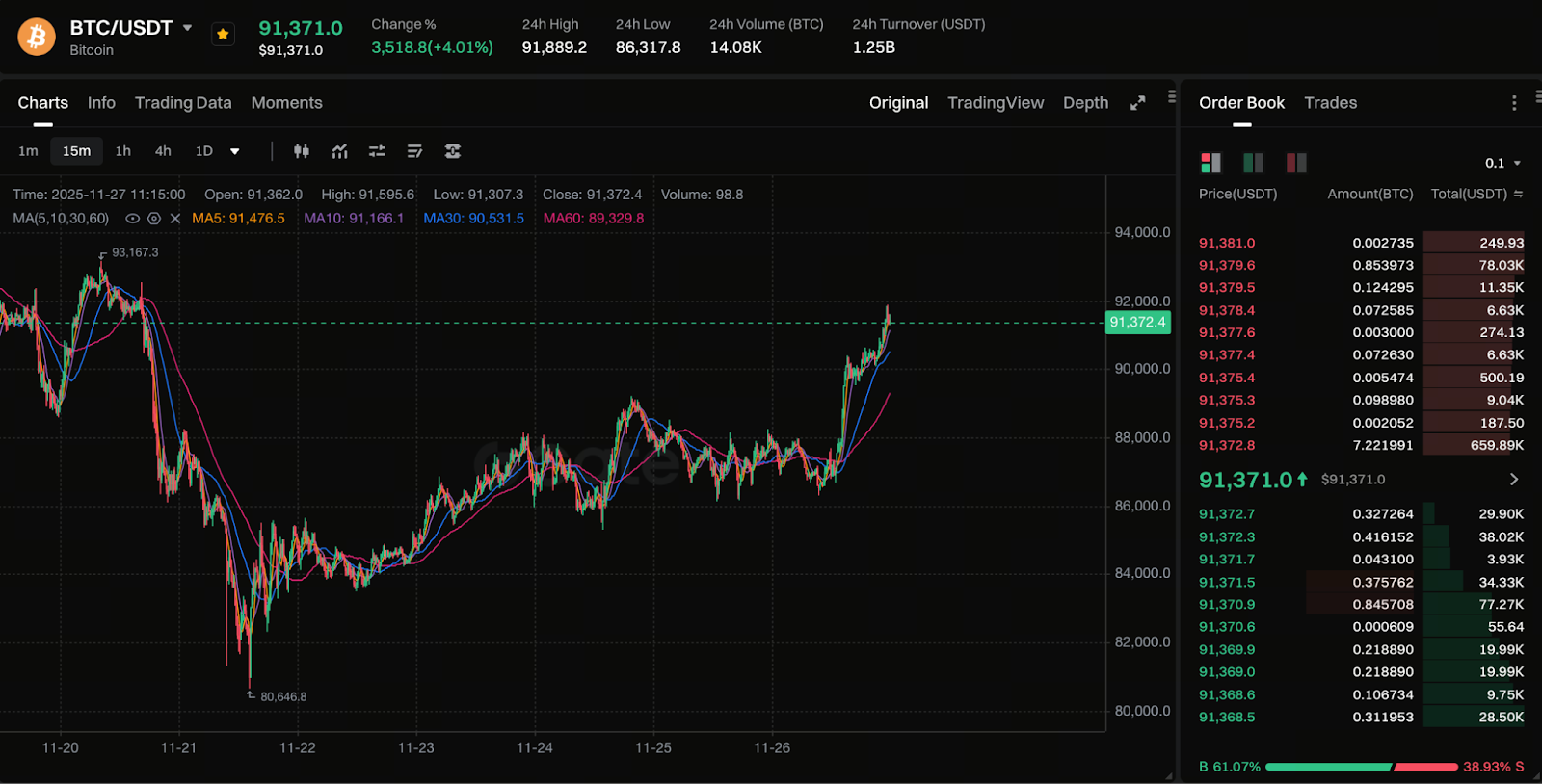In November 2025, Bitcoin ETFs Saw Nearly $3.5 Billion in Net Outflows, Signaling a Potential “Liquidity Winter”
What Is a Bitcoin ETF and Why Is Its Market Impact So Significant?
The introduction of spot Bitcoin ETFs represents a pivotal milestone in bridging the crypto market with traditional finance. An ETF (Exchange-Traded Fund) allows both institutional and retail investors to gain exposure to Bitcoin without managing wallets or handling blockchain transactions. As a result, ETF flows directly reflect the positions of major institutions. Their capital typically far exceeds that of retail investors.
Bitcoin ETFs have a direct effect on price:
- Capital inflows mean the ETF must purchase actual Bitcoin, which tends to push prices higher.
- Capital outflows mean the ETF sells Bitcoin, creating downward pressure on prices.
Consequently, analysts widely regard monthly changes in ETF flows as a key barometer for Bitcoin price trends.
Bitcoin ETFs Recorded $3.5 Billion in Outflows in November, Setting a New Record
November 2025 saw a dramatic shift in Bitcoin ETF data: net outflows for the month totaled approximately $3.5 billion, nearly matching the all-time high.
Top funds such as IBIT and FBTC experienced large-scale redemptions, with single funds redeeming more than $2 billion in one month. This level of capital outflow clearly indicates that the market has shifted to a risk-averse stance.
This outflow not only set a yearly record, but also represented the most intense wave of institutional redemptions since Bitcoin ETFs launched.
How Fund Outflows Impact Bitcoin Prices: Immediate Selling Pressure

Chart: https://www.gate.com/trade/BTC_USDT
Outflows from Bitcoin ETFs create two distinct pressures:
- ETF holdings must be reduced: When investors redeem shares, ETF managers are required to sell an equivalent amount of Bitcoin, which directly increases market selling pressure.
- Investor sentiment intensifies: Observing institutional selling can rapidly trigger panic, prompting more investors to redeem or sell BTC.
The $3.5 billion outflow in November led to multiple sharp corrections in Bitcoin’s price that month. Short-term volatility spiked.
Why Did Capital Suddenly “Accelerate Its Exit” in November?
The surge in withdrawals in November was not random, but the result of several factors converging:
1. Surge in Profit-Taking Pressure
Bitcoin rebounded several times in October and early November, attracting significant short-term capital. As prices became volatile at higher levels, some institutions and funds moved early to realize gains.
2. Macroeconomic Uncertainty Intensifies
In November, major global economies faced:
- Unclear interest rate trajectories
- Broad pressure across risk assets
- Increased volatility in U.S. equities
These dynamics led institutions to reduce exposure to highly volatile assets.
3. Crypto Market Cools as Sentiment Shifts from “Greed” to “Caution”
With waning enthusiasm for NFTs, AI+Crypto, and the Solana ecosystem, the broader crypto market entered a “cooling period.” Lower sentiment indices often amplify ETF flow volatility.
4. Institutions Rebalance Portfolios
Year-end is typically when institutions rebalance portfolios. Some funds reduced Bitcoin allocations, redirecting capital to bonds, gold, or cash to mitigate annual volatility risk.
Looking Ahead: Will Bitcoin Enter a Deep Correction?
The $3.5 billion outflow is not merely a short-term event—it may trigger a chain reaction:
- If capital continues to exit, Bitcoin prices could fall further.
- Market confidence typically recovers gradually following significant outflows.
- Institutions usually wait for volatility to subside and for macro policies to clarify before increasing allocations again.
Nonetheless, Bitcoin’s structural demand remains intact from a medium- and long-term perspective:
- Mainstream institutions are increasing their long-term allocations.
- ETFs have become the primary gateway for traditional capital to access the market.
- Bitcoin’s supply is fixed, and long-term demand remains robust.
Short-term weakness may persist; however, Bitcoin maintains its long-term growth narrative.
Related Articles

Pi Coin Transaction Guide: How to Transfer to Gate.com

Flare Crypto Explained: What Is Flare Network and Why It Matters in 2025

2025 BTC Price Prediction: BTC Trend Forecast Based on Technical and Macroeconomic Data

How to Use a Crypto Whale Tracker: Top Tool Recommendation for 2025 to Follow Whale Moves

What is N2: An AI-Driven Layer 2 Solution
